#panna tiger reserve resorts
Explore tagged Tumblr posts
Text
पन्ना नेशनल पार्क के बारे में रोचक तथ्य | Amazing Facts About Panna National Park in Hindi
पन्ना नेशनल पार्क के बारे में रोचक तथ्य | Amazing Facts About Panna National Park in Hindi पन्ना नेशनल पार्क,पन्ना टाइगर रिजर्व, वन्यजीव, पन्ना नेशनल पार्क में सफारी का समय तालिका ( Interesting Facts About Panna National Park, Panna tiger Reserve, Panna tiger Reserve Kaise Pahunche ) पन्ना नेशनल पार्क औपचारिक रूप से भारत के 22वे और मध्य प्रदेश में पांचवे टाइगर रिजर्व के रूप में प्रसिद्ध है।…
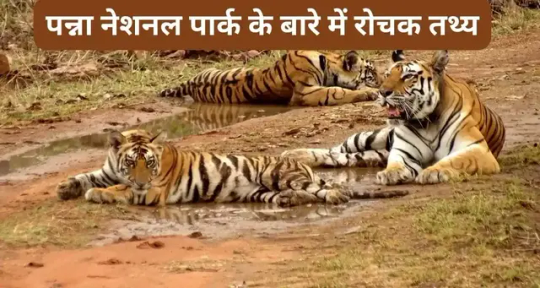
View On WordPress
#Amazing Facts About Panna National Park in Hindi#bandhavgarh national park in hindi#how many tigers in panna national park#panna national park is famous for which animal#panna national park is located in which river#panna national park is located in which state#panna national park safari booking#panna national park tickets#panna tiger reserve#panna tiger reserve resorts#panna tiger reserve timings#कान्हा नेशनल पार्क कहां है#पन्ना टाइगर रिजर्व ऑनलाइन टिकट#पन्ना टाइगर रिजर्व मध्य प्रदेश के किस जिले में है#पन्ना टाइगर रिजर्व में कितने शेर हैं#पन्ना टाइगर रिजर्व सफारी#पन्ना राष्ट्रीय उद्यान किस नदी के तट पर है#पेंच नेशनल पार्क कहां है#पेंच राष्ट्रीय उद्यान
0 notes
Text
Panna Tiger Safari in Panna Tiger Reserve – Book Your Tiger Safari Today

Welcome to the Panna National Park, Get the best services for Tiger Safari booking, We provide the best Panna Tiger Safari booking online service for Panna Tiger Reserve visiting.
Choose through our wide range of Panna National Park safari tour packages. Customize your tour, book safari online, guide, permit, hotels & resorts.
Read More: https://www.pannatigersafari.com/
#panna national park#panna safari tour#panna tiger safari#panna tiger reserve#panna tiger safari online booking#panna permit booking#hotel & resorts in panna national park
1 note
·
View note
Text
Discover Exquisite Accommodations at Panna National Park Resorts
Embark on a journey of luxury and adventure amidst the breathtaking landscapes of Panna National Park with our curated selection of resorts. Experience the perfect blend of comfort and wilderness as you explore one of India's most renowned tiger reserves. From eco-friendly lodges to opulent retreats, our handpicked resorts offer an array of amenities and experiences to ensure an unforgettable stay. Book your stay now and immerse yourself in the natural wonders of Panna National Park.
https://www.mpforests.com/
0 notes
Text
Most Popular Tiger Safari National Parks In India & Wildlife Tour Packages
Most Popular Tiger Safari National Parks In India & Wildlife Tour Packages
India is one of the best places in the world to experience the majestic tigers in their natural habitats. With its rich and diverse wildlife, India offers an array of national parks that offer an unrivaled wildlife experience. These national parks are a perfect blend of adventure, thrill, and scenic beauty, making them one of the most sought-after tourist destinations. In this press release, we will be highlighting the five most popular tiger safari national parks in India, along with their respective resorts and key attractions.
If you’re interested in learning more about the most popular tiger safari national parks in India, be sure to check out our blogs for in-depth insights and information. Our blogs feature detailed information about each park, including the best time to visit, the wildlife you can expect to see, and tips for making the most of your visit.
With our expert knowledge and first-hand experience, you can rest assured that you’ll have all the information you need to plan an unforgettable wildlife adventure in India. So why wait? Start reading our blogs today and start planning your next tiger safari in India!
Most Popular Tiger Safari National Parks In India
“Step into the heart of India’s wilderness and witness the magic of its tigers”
If you have already been captivated by the term “tigers,” here is a list of some of the greatest tiger safari national parks in India that you should visit during your trip. Scroll down to see what’s in store!
1) Kanha National Park
2) Bandhavgarh National Park
3) Satpura National Park
4) Panna National Park
5) Pench National Park
These national parks offer a chance to spot the Bengal tiger in its natural habitats and also provide an opportunity to observe other wildlife species. Visitors can choose from a variety of tours, including jeep safaris, elephant safaris, and walking safaris.
1. Kanha National Park
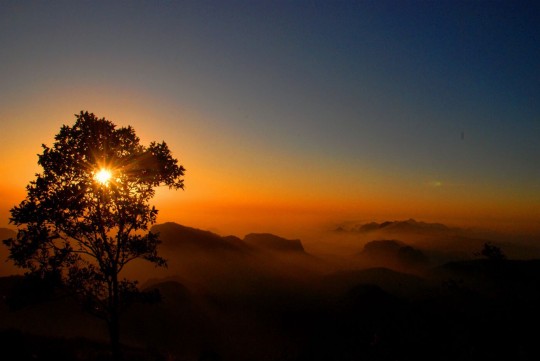
The Kanha Tiger Reserve here is known for its large population of Bengal tigers, making it one of the best places in India to spot the majestic animal in its natural habitat. Visitors can explore the park on a wildlife safari and spot other wildlife species, such as leopards, hyenas, sloth bears, and several species of deer.
Kanha Jungle Safari Park is also a birdwatcher’s paradise, with over 200 species of birds, including the Indian peafowl, the Malabar pied hornbill, and the black ibis. Visitors can also explore the Kanha Tiger Reserve on a nature walk, during which they can witness the beauty of the park’s vegetation and learn about its ecosystems from knowledgeable guides.
With well-maintained Kanha Kisli Jungle Safari Booking infrastructure and comfortable accommodations, Kanha National Park provides a comfortable and safe environment for visitors to experience the best of Indian wildlife. Whether you’re a seasoned traveler or a first-time visitor, Kanha National Park is a must-visit destination for anyone looking to experience the beauty of Indian wildlife.
For those looking for comfortable accommodation options, there are plenty of Kanha Kisli Jungle Safari Booking options available in and around Kanha, such as Kanha Resort, Kusum Resort, Kanha Earth Lodge, Vanya Resort, Kanha Treasure Resort, and Mogli Resorts Kanha. Each resort offers a unique experience, blending the charm of nature with modern amenities and hospitality.
If you’re looking to book a Kanha Kisli Jungle Safari in India, don’t wait! With its rich wildlife and beautiful scenery, Kanha National Park is a must-visit destination for anyone interested in experiencing the best of Indian wildlife.
Our team of experts is here to help you plan the perfect safari, from choosing the right time to visit to selecting the best accommodations and activities. With our knowledge and experience, we’ll help you create an unforgettable wildlife adventure in Kanha Kisli.
So why wait? Book your Kanha Kisli Jungle Safari today!
2. Bandhavgarh National Park

The Bandhavgarh Tiger Reserve is known for its large population of Bengal tigers, making it one of the best places in India to spot the majestic animal in its natural habitat. Visitors can explore the park on a wildlife safari and spot other wildlife species, such as leopards, hyenas, sloth bears, and several species of deer.
Bandhavgarh National Park is also a birdwatcher’s paradise, with over 250 species of birds, including the Indian peafowl, the Malabar pied hornbill, and the black ibis. Visitors can also visit ancient monuments and temples located within the park, offering a unique blend of history and nature.
With its well-maintained infrastructure and comfortable accommodations, Bandhavgarh National Park provides a comfortable and safe environment for visitors to experience the best of Indian wildlife. Whether you’re a seasoned traveler or a first-time visitor, Bandhavgarh Tiger Reserve is a must-visit destination for anyone looking to experience the beauty of Indian wildlife.
For those looking for comfortable Bandhavgarh Jungle Safari Booking accommodation options, Bandhavgarh has some of the best resorts in India. These include Tiger Trails Resort, Aranyak Resort, Sun Resort, Syna Tiger Resort, and Tree House Hideaway. Each resort offers an unparalleled wildlife experience, with comfortable rooms, excellent dining options, and personalized service.
If you’re looking to book a Bandhavgarh Jungle Safari in India, now is the time! With its abundant wildlife and breathtaking scenery, Bandhavgarh National Park is one of India’s premier wildlife destinations.
Our team of experts is here to help you plan the perfect safari, from choosing the right time to visit selecting the best accommodations and activities. With our knowledge and experience, we’ll help you create an unforgettable wildlife adventure in Bandhavgarh.
So why wait? Book your Bandhavgarh Jungle Safari today!
3. Satpura National Park
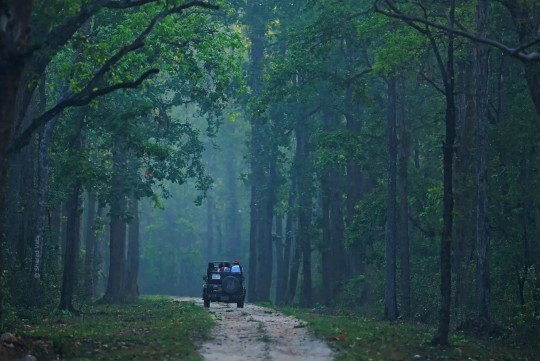
The Satpura Tiger Reserve is known for its stunning landscape, which includes dense forests, rolling hills, and meandering rivers. Visitors can explore the park on a wildlife safari and spot several species of mammals, such as the Bengal tiger, leopard, sloth bear, and Indian bison.
Satpura National Park is also a birdwatcher’s paradise, with over 300 species of birds, including the Indian peafowl, the Indian grey hornbill, and the Malabar pied hornbill. Visitors can also explore the Satpura Tiger Reserve on a nature walk, during which they can witness the beauty of the park’s vegetation and learn about its ecosystems from knowledgeable guides.
With its serene and peaceful atmosphere, Satpura National Park provides a unique and unforgettable experience for nature lovers and wildlife enthusiasts. Whether you’re seeking a peaceful getaway or an adventurous escape, Satpura National Park has something for everyone, especially the well-known Madhai National Park Jungle Safari.
For those looking for comfortable Satpura Jungle Safari Booking accommodation options, Satpura has some of the best resorts in India. These include Satpura Safari Resort, MPT Bison Resort, Denwa Backwater Escape Resort, and Madhai Riverside Lodge. Each resort offers a unique wildlife experience, with comfortable rooms, excellent dining options, and personalized service.
If you’re looking to book a Satpura Jungle Safari in India, now is the time! With its lush forests, scenic beauty, and diverse wildlife, Satpura National Park is a must-visit destination for anyone interested in experiencing the best of Indian wildlife.
Our team of experts is here to help you plan the perfect safari, from choosing the right time to visit selecting the best accommodations and activities. With our knowledge and experience, we’ll help you create an unforgettable wildlife adventure in Satpura.
So why wait? Book your Satpura Jungle Safari today!
4. Panna National Park

Panna National Park is home to several threatened and endangered species, including the Bengal tiger, leopard, and sloth bear. The park is also a haven for birdwatchers, with over 200 species of birds, including the paradise flycatcher, the Indian roller, and the red-headed vulture.
Visitors can explore the Panna Tiger Reserve on a Panna National Park Jungle Safari and get up close and personal with the amazing wildlife. They can also visit the nearby Ken Gharial Sanctuary, which is home to one of the largest populations of gharials, a species of crocodile, in the world.
With its well-maintained infrastructure and comfortable accommodations, Panna Tiger Reserve provides an unforgettable experience for nature and wildlife lovers. Whether you’re a seasoned traveler or a first-time visitor, Panna National Park is a must-visit destination for anyone looking to experience the best of Indian wildlife.
For those looking for comfortable Panna Jungle Safari Booking accommodation options, Panna has some of the best resorts in India. These include Greetoe Camp Panna Resort, MPT Jungle Camp, Ken River Lodge, and Panna Tiger Resort. Each resort offers a unique wildlife experience, with comfortable rooms, and excellent dining.
If you’re looking to book a Panna Jungle Safari in India, now is the time! With its stunning scenery, rich wildlife, and diverse habitats, Panna National Park is one of India’s premier wildlife destinations.
Our team of experts is here to help you plan the perfect safari, from choosing the right time to visit selecting the best accommodations and activities. With our knowledge and experience, we’ll help you create an unforgettable wildlife adventure in Panna.
So why wait? Book your Panna Jungle Safari today!
5. Pench National Park
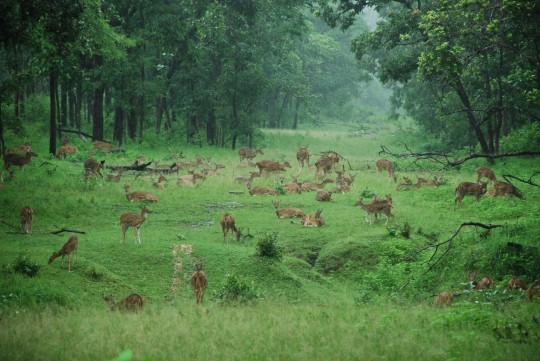
The Pench Tiger Reserve is also known for its rich avian life, with over 270 species of birds, including the Indian Pitta, the Malabar Pied Hornbill, and the Rufous-tailed Lark. Visitors can go on a wildlife safari, explore the scenic landscape, and visit ancient monuments and temples located within the park.
Pench National Park is a unique blend of history and nature, making it a must-visit destination for wildlife enthusiasts and nature lovers. With its well-maintained roads, comfortable accommodations, and trained guides, visitors can experience the true essence of Indian wildlife in a comfortable and safe environment with Pench Tiger Reserve.
Turia, Sillari, Khursapar, and Rukhad are all zones within the Pench National Park in Madhya Pradesh, India, each offering its own unique wildlife experience. The Turia Zone is known for its dense forests and large population of tigers, while the Sillari Zone is known for its tranquil atmosphere and diverse wildlife. The Khursapar Zone is known for its rolling hills and abundant birdlife, and the Rukhad Zone is known for its scenic beauty and rich vegetation. Visitors to Pench National Park can explore each of these zones on a wildlife safari and experience the best of Indian wildlife.
For those looking for comfortable Pench Jungle Safari Booking accommodation options, Pench has some of the best resorts in India. These include Olive Resort Turia and Sillari, Village Machaan Resort, Banyan Tree Camp, Tiger N Woods Resort, GoFlamingo Resort Sillari, and Green Court Resort Sillari. Each resort offers a unique wildlife experience, with comfortable rooms, and excellent dining.
If you’re looking to book a Pench Jungle Safari in India, now is the time! With its rich wildlife, lush forests, and breathtaking scenery, Pench National Park is a must-visit destination for anyone interested in experiencing the best of Indian wildlife.
Our team of experts is here to help you plan the perfect safari, from choosing the right time to visit selecting the best accommodations and activities. With our knowledge and experience, we’ll help you create an unforgettable wildlife adventure in Pench.
So why wait? Book your Pench Jungle Safari today!
Get Up Close & Personal With India’s Tigers In Their Natural Habitats!
India is home to some of the world’s most incredible Pench National Park Jungle Safari national parks, each offering its own unique blend of wildlife, scenery, and cultural heritage. Whether you’re a seasoned traveler or a first-time visitor, these parks are sure to leave a lasting impression.
So if you’re ready to experience the beauty and excitement of India’s most popular tiger safari national parks, be sure to book your trip soon! With our knowledgeable team and extensive experience, we can help you plan the ultimate wildlife adventure and create memories that will last a lifetime.
Book now and get ready for the adventure of a lifetime!
0 notes
Text
Safari Book
national parks in karnataka | sitara | ranthambore hotels | kaila devi temple | ranthambore resorts | machan resort | panna national park | ganpati mandir | first national park in india | wildlife conservation | sariska national park | kumbhalgarh rajasthan | bandhavgarh | rajasthan tour packages | sawai | machan | kothi | ranthambore fort | kaziranga | tiger sound | shergarh | nagarhole national park | ganesh temple near me | tadoba | bagh | rajasthan tourism | ganesh mandir | sariska tiger reserve | places to visit in agra | tiger reserves in india | sariska | keoladeo national park | national park in assam | tadoba national park | ganesh temple | corbett national park | bundi | pench national park | bharatpur rajasthan | nearest park | bandhavgarh national park | haveli | bandipur national park | bandipur | sawai madhopur | anjali tendulkar | kanha national park | national parks in india | national park | kumbhalgarh | ranthambore | kaziranga national park | bharatpur | jim corbett national park | ranthambore national park | park | jim corbett | tiger | chittorgarh
0 notes
Link
Panna Tiger Reserve:- Panna Tiger Reserve is located in Panna district of Madhya Pradesh and Panna National Park located in Chhatarpur district of India. In 1981 it has been declared as a wildlife sanctuary.
0 notes
Link
#Luxury resorts in Panna#hotels in Panna#Panna jungle safari booking#resort booking in panna#Panna Accommodation
0 notes
Text
The Tendu Leaf Jungle Resort – Blending in with nature
New Post has been published on https://fashiondesigne.com/the-tendu-leaf-jungle-resort-blending-in-with-nature/
The Tendu Leaf Jungle Resort – Blending in with nature

The name Tendu Leaf Jungle Resort immediately evoked visions of a rather “close-to-the-ground” wildlife resort experience for me. Let me explain – the Tendu Leaf while rather unheard of in the urban jungle, is an iconic emblem of life around the jungles of Central India. Used to roll bidis (rustic cigarettes) the plucking and sale of Tendu leaves has been a trade for tribals for a long time. Today, it’s an omnipresent motif when you visit jungles such as Panna, and I couldn’t wait to experience the Tendu Leaf Jungle Resort in Panna, Madhya Pradesh.


Getting there
The Tendu Leaf Jungle Resort is merely 500 meters from the gate of Panna Tiger Reserve (which makes it a great base to get to those safaris bright and early)! It’s an easy 30 minute drive from Khajuraho airport and I was delighted with Vistara’s connectivity to Mumbai via Delhi and Varanasi. I found this a lot more convenient than taking a train, but there’s that option too – with connectivity to Delhi and Mumbai.
The Resort
The first thing to strike me about the resort was the unconventional way it has been built. No steel, cement or chemicals here – just plain old mud and recycled wood! So it’s safe to say that sustainability is literally at the very foundation of this resort. The structures blend in quietly as if to camouflage themselves within the lush greenery that occupies the sprawling property. The walking paths are unpaved and natural – made to feel like you’re walking inside the jungle. Talking about sustainable and eco-friendly, I was delighted to discover that the entire place runs on renewable solar energy. And we didn’t face lights out for even a minute. It’s incredible! While walking around, I also noticed the dustbins were made of recycled wood, sans plastic bags. That’s the detailing when it comes to ensuring they limit the use of plastics.

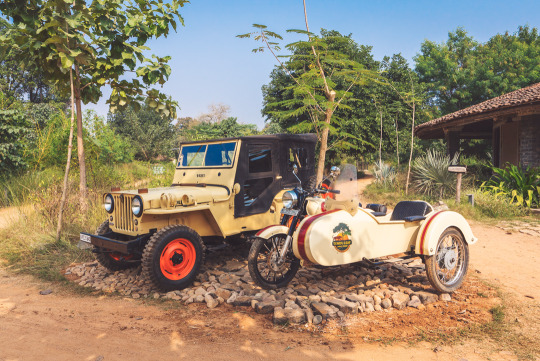
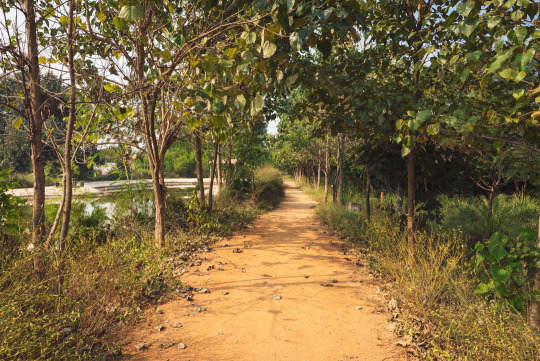

The Huts
There are 3 kinds of huts at the Tendu Leaf Jungle Resort – Family cottages, luxury huts and deluxe huts. I stayed in a Luxury Hut, and mine was named Khajoor after the date palms that lined its walkway. (Each Luxury hut is named after the trees that line its respective walkway). These pretty little huts look clean and minimal, and just sit quietly amongst the trees. Stepping into my luxury hut, the first thing that struck me was the size. It’s actually pretty large. The door on the porch (which had its own sit-out with chairs and table) led into a living area or lounge. Two massive prints on the wall of the Indian Roller (a bird I’ve never managed to click in-flight) and the Stork Billed Kingfisher (a bird I’ve only seen once). I sat down for a while and stared at the larger than life size prints, enjoying every detail from my perch on the sofa. Drawing up the blinds, I smiled at how everything outside my window was green. Through the dressing room and past the bathroom (with its open to the elements outdoor shower), I walked on to the bedroom and found a spacious bed under a high roof and a picture of a spotted deer to admire from the bed. Large windows on either side let the beautiful Panna sun in and I settled in for a cup of tea. Delighted to be here.

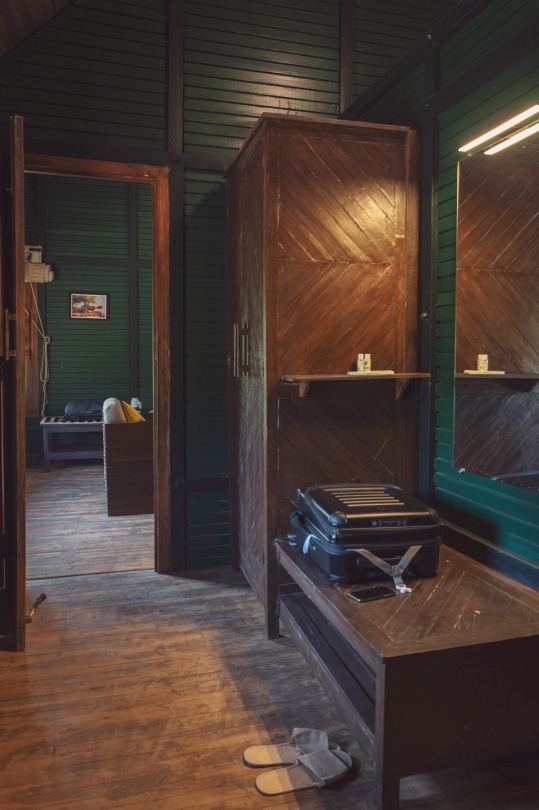
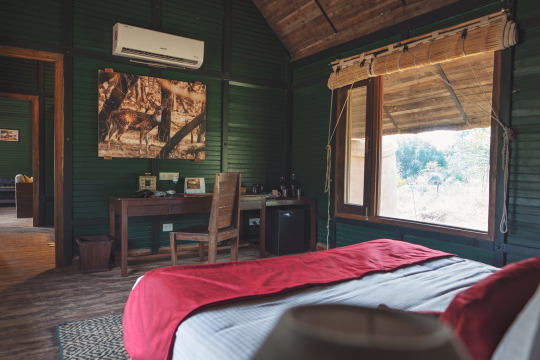
Wildlife Safaris in Panna Tiger Reserve
I had the privilege of going on morning and evening drives with 2 different naturalists, each of whom brought their distinct styles and knowledge areas to the experience. Rajju is young, enthusiastic and extremely energetic when it comes to tracking wildlife. Swami is experienced, has a wealth of information and is great to sit back with and understand all the little things across the jungle. While I prefer to go on safari without the single-minded focus of spotting a tiger, (I believe every little thing in the jungle is just as precious and fascinating) there’s no denying the adrenaline rush of seeing one. The only thing I did have on my wishlist was to see a baby cub – I’ve only seen sub adult cubs till date, and I wanted to see a little one too! Within minutes of our first drive into the park, Rajju delivered and how! We spotted the famous T151 crossing the path with her teeny little cub bounding after her, and that was a moment I’ll never forget. It was a quick one, but one that’s imprinted on my mind. Beyond the tiger of course was the exhilarating experience tracking alarm calls and pugmarks, spotting lots of Spotted Deer and Sambar – some Chinkara too, wild boar and then of course, the birds. I was delighted to finally be able to photograph the Yellow Footed Green Pigeon, a grey wagtail, white browed wagtail, white throated kingfisher and common kingfisher, crested serpent eagle and long billed vultures. From afar we spotted Himalayan Griffin, White backed vultures, Black Storks, Whistling ducks and so much more. All in all, each drive was delightful, and what stood out to me was the sheer beauty of the park – something that clearly isn’t spoken about enough, because it came as a surprise to me. I love that the Tendu Leaf Jungle Resort packs you a picnic breakfast to carry into the park – one that we enjoyed at Vulture point – overlooking the gorge which echoed with the alarm calls of Sambar the whole time that we stood there munching our sandwiches and sipping tea.
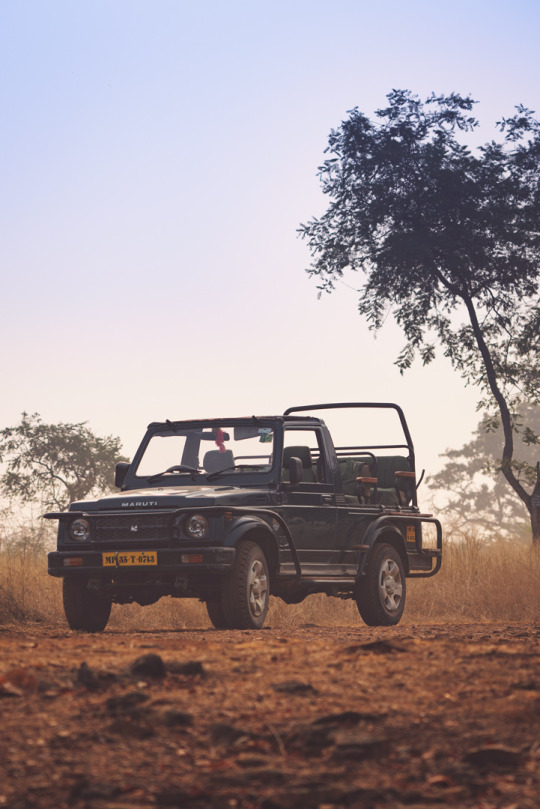
Dining at Tendu Leaf Jungle Resort
The first thing that stood out for me was the option to have room service delivered to your room. As a blogger, photographer and wildlife enthusiast, I tend to burn the candle at both ends when I’m travelling, and on a night when I just wasn’t feeling up to getting dressed and going across to the dining building (since I had some pictures to process, and posts to upload) all I had to do was call up room service, and have the food delivered to my room. I could kick back and enjoy a delicious meal while sorting through the day’s photographs! For lunch however, I did walk across to the Riverview restaurant. With a beautiful sundeck, indoor (and air-conditioned) seating space and a terrace, I was tempted to sit outdoors, but eventually decided to stay out of the sun instead. I met with the chef, and discovered he’s absolutely fantastic with continental cuisine. However, I had walked through his sprawling kitchen garden earlier and I definitely wanted to taste something extremely local and rustic. So while I enjoyed some fabulous Mughlai cuisine for lunch, he remembered to send me some incredibly delicious Haath ki Roti and Litti for dinner!
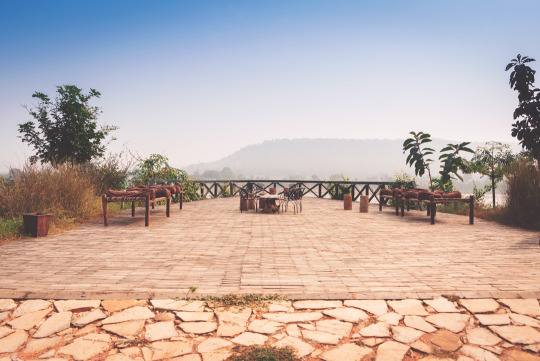
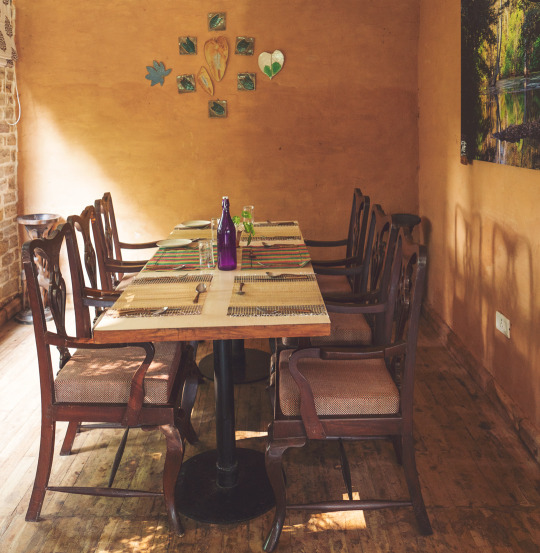

Other Activities
To call the Tendu Leaf Jungle Resort just a wildlife resort would be a gross misstatement. There’s so much to do here, that I very quickly realized I should have planned a much longer stay! Since it’s located right on the riverside, they have their own river access and boats to take you on languid boat rides down the Ken River (and I know that at least one group spotted a tiger swimming in the distance). There’s a wonderful little pond for young and old to go fishing, there’s a pottery studio and oven for those who wish to create some magic to take home with them. Kalakendra – the banquet hall is great for events, and there’s a beautiful little amphitheater for performances by the locals. There’s also a couple of ATVs for the thrill seekers, wonderful walking trails and much much more.


Every second of the 2 days I spent at the TOFTigers certified Tendu Leaf Jungle Resort was utterly magical. From the heartfelt service of the staff to the eco-friendly outlook and the privilege of staying in the midst of nature – it all made for a fantastic introduction to Panna.
This post was made possible by the Tendu Leaf Jungle Resort. Opinions, as always, are our own.
#Hotel Review#Hotels#Luxury Hotel#Luxury Safari#Nature#Outdoors#Panna#Safari#Safari India#Safari Lodge#Tiger#Wildlife
0 notes
Text
New world news from Time: How India’s Conservationists Are Fighting to Save Half of the World’s Tigers
How do you get a 400lb tiger into the back of a truck?
It’s an elaborate process that involves dozens of personnel, carefully calibrated tranquilizer darts, a custom-made cage — and a handful of elephants. All that was in place on June 20 when MB2, a three-year-old male tiger, was transported from Kanha Tiger Reserve in the central Indian state of Madhya Pradesh to the Satkosia Tiger Reserve in the eastern state of Odisha in the first ever such relocation.
“It was a very smooth operation,” Sanjay Shukla, a field director at the Kanha Tiger Reserve and the man who oversaw the relocation, tells TIME. “We gave MB2 the first tranquilizer shot and, after he became calm, we used the elephants to guide him towards the cage in the truck where we administered the second shot.” The tiger’s vital statistics were quickly recorded before he was fitted with a radio collar and sent on a 22-hour road trip to his new home.
Shukla and his team spent weeks selecting MB2 and preparing for the move. They needed a suitable male to introduce to Satkosia’s two aged female tigers in the hopes of reviving the animal’s population in the park. “We wanted a tiger that was about three years old and that hadn’t really marked a territory yet,” Shukla explains. It was also crucial to have a genetically strong animal to ensure that new populations would have good survival chances.
That relocation was the latest step in a concerted effort to protect India’s endangered national animal. But it’s not just an Indian story. With more than half of the world’s approximately 4,000 tigers roaming its forests and grasslands, India’s role in ensuring the survival of the big cat is globally crucial.
For much of the last century, the tiger’s future hasn’t been so bright: in their native Asian habitats, tigers face poaching, unchecked deforestation, increased human encroachment and disappearing prey. But recent national and international programs have helped the species find some footing. In 2010, 13 Asian nations that are home to tigers, including India, joined together in the Global Tiger Recovery Program, pledging to double the global tiger population by 2022 — the next Year of the Tiger per the Chinese horoscope. The group also decided to annually mark July 29 as Global Tiger Day.
Manpreet Romana—AFP/Getty Images Indian school children hold placards during a rally held to raise awareness for the protection of tigers and forests in India, in New Delhi, July 11, 2006.
India’s track record with tiger populations has been encouraging. Numbers have steadily risen in census reports since 2006 with the 2014 survey finding an estimated 2,226 wild tigers across the country. The 2018 All India Tiger Estimation is currently underway and is said to be the world’s largest wildlife survey in terms of “coverage, intensity of sampling and quantum of camera trapping.”
The striped cat has been a part of India’s culture for as long as anyone can remember. The warrior goddess Durga is often depicted riding one. Rudyard Kipling, author of The Jungle Book, cast the tiger as the villain in his famous collection of stories, perhaps inspired by the creatures that roamed his birthplace of Mumbai (then called Bombay) in the 18th and 19th centuries. Kings across India hunted the tiger for its prized coat and bragging rights.
That trend worsened under British Crown rule beginning in the late 1800s. Long lines of elephants would carry sahibs and wealthy Indians through dense forests on hunting expeditions. King George V reportedly killed 39 tigers in 10 days while traveling through India to Nepal in 1911. Poaching soon became another menace that contributed to the tiger’s disappearance. By some estimates, tiger numbers dropped from between 50,000 to 100,000 at the end of the 19th century to just 1,800 at the start of 1970s.
Hulton Archive—Getty Images George V (1865 – 1936) with the day’s bag of three tigers, after a hunt during the Durbar celebrations. The hunters are mounted on elephants.
Around that time Prime Minister Indira Gandhi became aware of the plight of the tiger. She set up Project Tiger, a government program to protect the animal, and in 1973 and created reserves throughout India with rangers to patrol them. Since then, the big cat has seen a steady revival. Some reports suggest that the final findings of the ongoing national census, to be released in January 2019, could put the population at more than 3,000 across 50 reserves. It’s a good start, though multiple threats remain.
‘We don’t take it seriously enough’
“I’m proud of what India has done because we’ve secured our tiger population,” Prerna Singh Bindra, a leading conservationist and a former member of the National Wildlife Board, tells TIME. But, she adds, “No tiger is safe as long as there is demand around the world.”
Tiger bones and other parts are sought-after ingredients in traditional East Asian medicines and, sadly, tiger skins are still prized trophies for hunters everywhere. The Wildlife Protection Society of India has been tracking yearly poaching deaths since 1994 and recorded a maximum of 121 deaths in 1995 and a minimum of 13 in 2011; 37 tigers were killed by poachers last year.
Poaching was, at least partly, the cause for Rajasthan’s Sariska Tiger Reserve losing all its big cats in the early 2000s. Concerned experts and naturalists alerted the government to the disaster, which led to the creation of the National Tiger Conservation Authority in 2005. The body oversees nation-wide conservation efforts now.
Bindra says that India and other tiger range countries need to do more. “We don’t take it seriously enough — the conviction rate in poaching cases is less than 1% and the Wildlife Crime Control Bureau is not empowered enough,” she says, adding that reserves are often short staffed and guards are not trained sufficiently or given proper equipment to fight poachers.
Many times, poachers aren’t outsiders but villagers living in tribal communities within the tiger reserves and national parks. Tough lives with little or no access to basic necessities like medical facilities, electricity and schools push some to use their knowledge of the land and offer up their services to shady buyers.
Read more: As the World Mourns Cecil the Lion, Asia Is Taking Steps to Protect Its Own Big Cats
At the same time, these villagers are usually among the first casualties in human-animal conflicts. Tigers have been known to attack livestock, crops and occasionally humans, who retaliate by killing the big cats. Sometimes the government intervenes and resettles affected communities, but as Krithi Karanth, an associate conservation scientist with the Wildlife Conservation Society, and an explorer with the National Geographic Society, points out, “Displacement, forced relocations and voluntary resettlement” have resulted in “a mixed bag.”
Villagers claim they are not given adequate compensation or enough new land. For every success story — like the relocation of 400-odd families from the Bhadra Tiger Reserve in south India — there are conflicts. More than 300 members of the Baiga community — an ethic group in central India — recently protested for two days against a plan to remove them to make way for a proposed tiger corridor.
Another major threat to the tiger in India is habitat fragmentation and destruction. With aspirations of becoming a global economic power, India has been pushing countless infrastructure projects, some of which, environmentalists say, disturb the ecological balance. For example, the Ken-Betwa river-linking project, being built in the heart of the Panna Tiger Reserve in central India, will affect 30% of the park with more than one million trees being felled in the process. Similarly, there are plans and proposals for highways, canals and railway tracks through vital tiger corridors and forests in other parts of the country.
Hotels and resorts are also mushrooming on the fringes of national parks. Tiger tourism can be big business in India; Karanth’s studies have found that nearly 1.5 million people visited tiger reserves in India in 2014-15, making up 32% of all wildlife visits in the country. This kind of tourism pumps some money into local communities and stirs interest in conservation, but despite good intentions it also encroaches on wildlife habitats.
“We need to reinvent tiger tourism in a way that leaves a minimal footprint,” Bindra says. On Global Tiger Day, experts will be figuring out how to balance commerce and conservation in a way that ensures India’s tiger population will continue to grow.
“We have a responsibility to the world,” Karanth says, “to ensure that the tiger doesn’t die out.”
July 28, 2018 at 09:39AM ClusterAssets Inc., https://ClusterAssets.wordpress.com
0 notes
Text

A Gateway to Adventure
For adventure enthusiasts, Greetoe Resort Panna is a playground waiting to be explored. Embark on thrilling jungle safaris led by experienced guides, where you'll have the chance to spot elusive tigers, majestic elephants, and a myriad of other wildlife species.
https://www.mpforests.com/panna-tiger-reserve
0 notes
Text
Top 4 National Parks to Visit in Madhya Pradesh
India is known for its diversity and cultural richness. Known for its glorious past and brave stories, India offers its every traveller a warm welcome with all open hearts. If you are thinking to visit India in the near future, plan your vacations to one of the most amazing state of the country, Madhya Pradesh.
As its name suggests Madhya (center) Pradesh (area), the state is located in the middle of the country. The state is blessed with a bundle of natural richness and wildlife reserves. It is the state of Madhya Pradesh, which is crowned with the title of having maximum wildlife reserve centuries in the country. Click this link: http://bestonbumpercars.com/electric-bumper-cars-for-sale/ to buy beston electric bumping car for kids cheap,
To make your wildlife tour more enchanting we have brought to you the best of the 4 wildlife sanctuary of Madhya Pradesh which are visited by thousands of travellers every year. So let us start with this amazing jungle tour-
1. Bandhavgarh National Park
Bandhavgarh National Park is one of the famous National Parks which is spread at Vindhya hills at Madhya Pradesh. It is one of the best places to see royal Bengal tigers in India. The density of tiger's population is highest known in India in this park. It is a home to 80 species of aquatic animals, 250 species of birds and 37 species of mammals. Click this website to know Beston group.
How to reach
This national park is well-connected through a nicely cluster of roads and railways. One can reach Bandhavgarh National Park via railways, roadways and airways. Khajuraho and Jabalpur Airport is near from this park. Nearest railway station is Umaria and Katani railway station. This park is well-connected from various cities like Jabalpur, Satna, Umaria and Khajuraho.
Hotels
Seeing the large number of travellers from across the country, one can find a plethora of hotels which offers you a nice stay. These Madhya Pradesh hotels are -
Aranyak Resort Nature heritage Resort Jungle Mantra Tiger Trails Resort and many more
2. Kanha Tiger Reserve
Kanha National Park is one of the famous tourist attractions which is situated in the heart of Madhya Pradesh, India. The famous author Rudyard Kipling got inspired from this park and he wrote his masterpiece called Jungle Book. Kanha is also famous for sightseeing of tigers, Barasinga (Swamp deer), Blackbuck and peacock. The reserve also has a thick forest which includes Sal, Bamboo and Mahua trees. Kanha Park is also famous for a large variety of birds. There are two entrance gates for this park- Khatia and Mukki entrance gate. Khatia entrance gate falls on Mandla district &Mukki on Balaghat district of Madhya Pradesh state.
How to reach
It is well-connected through roadways, railways and airways. There are direct flights from Delhi and Mumbai to Dr. Babasaheb Ambedkar International Airport-Nagpur, Swami Vivekananda Airport -Raipur and Jabalpur. There are regular trains from Jabalpur, Nagpur and Gondia to this park that will ease your India tours.
Hotels
One can find the finest of the hotels in and near Kanha National Park, which are equipped with necessary contemporary amenities. These hotels are -
Taj BanjaarTola Tuli Tiger Corridor Kanha Earth Lodge The Baagh Resort
3. Pench National Park
This National Park is quite different from others as Pench National Park is situated partially in Madhya Pradesh and partially in Maharashtra in the district of Seoni and Chhindwara. It derives its name from Pench River which divides the park into western and eastern halves. It is a famous tourism spot which is spread in an area of 758 sq kms. Your India tourism get more exciting as the place is a rich reservoir of flora and fauna. It is a safe shelter for many endangered species.
How to reach
Pench National Park is well-connected to other cities via railways, roadways and airways. Nagpur and Jabalpur airport are nearest from this park. Nagpur railway station is the nearest railway station from Pench National Park.
Hotels
Here are the finest hotels near the park -
Taj Baghvan Wildlife Resort Tuli Tiger Corridor Pench Jungle Camp Mahua Vann Resort Tiger Valley Resorts
4. Panna National Park
It is the famous national park which is situated in Panna and Chhatarpur district of Madhya Pradesh. It is listed as the twenty second best National Park in India and fifth in Madhya Pradesh. A visit to this national park is a treat for your Rajasthan Tourism. It is one of the famous Tiger reserves in India which is also home to some of the wildlife species in India which includes sloth bear, Chinkara, sambhar, deer, antelope and nilgai. This region is also known for its diamond industry.
How to reach
One can reach at this park via railways, roadways and airways. The nearest airport is Khajuraho airport. Satna is the nearest railway station from this park. Panna town is the nearest bus stand which is connected to Khajuraho, Satna and many other places in Madhya Pradesh.
Hotels
To reward your tour with the finest stay, the place is filled with many accommodation options which are also listed as best Madhya Pradesh hotels -
Ken River Lodge Taj Safaris Pashangarh Panna Tiger Resort Kings Lodge Kanga Earth Lodge and Tree House Hideaway
If you are looking for the opportunity to spend time amidst the wildlife of the country, Madhya Pradesh is the best location that you can choose while planning your holidays in India.
Article Source: http://EzineArticles.com/9628755
0 notes
Photo

Tiger Who Walked 125 Km, Most Likely Over 2 Months, Named Bahubali 2
Bahubali 2's migration shows importance of maintaining wildlife corridors in tiger reserves in India
MUMBAI, India: At the Bandhavgarh Tiger Reserve, all eyes are on Bahubali 2. A three-year-old tiger earned the moniker after walking a heroic distance of 125 km. Why name him after the sequel? Because park officials had already seen Bahubali 1 - the name given to another tiger a few years ago. Bahubali 2 captured the park officials' imagination when he was first sighted in the buffer zone of Bandhavgarh Tiger Reserve a few months ago, and was named T-71. The pictures of the big cat were also uploaded on social networking sites, after which he was identified as a migrant tiger from Panna Tiger Reserve, where his name was P213(21). It was concluded that the tiger had walked 125 km from Panna, which is in Madhya Pradesh, to Bandhavgarh, which is adjacent to the border between Maharashtra and Madhya Pradesh. While the exact details about the path taken by the tiger are not known, it is said that the tiger might have taken 3-5 months to reach Bandhavgarh. For this feat, he is now being called Bahubali 2 by the wildlife community. Bahubali part 1 Incidentally, the original Bahubali too was a migrant tiger from Panna (P212), who had wandered out in February 2014. He was found in Rewa and was released in Sanjay Tiger Reserve a month later. While Bahubali 2 was so named for his strength, the first tiger got his name from his humongous size. In July 2015, Bahubali died at the age of 4-5 years, reportedly because of territorial clashes with another tiger. Migrant tale Bahubali 2's journey is being held up as an example of successful wildlife migration, with activists emphasising on the need to maintain and protect wildlife corridors connecting national parks and tiger reserves. The discovery that Bahubali 2 was in fact a migrant was made by wildlife photographers and R Sreenivasa Murthy, the former field director of Panna, who is now the Assistant Principal Chief Conservator of Forest (APCCF) and also member secretary of the Madhya Pradesh State Biodiversity Board (MPSBB). They identified the tiger by tallying its unique stripe pattern from photographs. In order to support his claim, Murthy also prepared a detailed report, 'Identification Report of Bandhavgarh's Tiger-71 (June 2017)'. Murthy said, "The forest department records at Panna also mention that the birth date of the male tiger is May 2014. At the end of 2016, the same tiger started its migration and reached Bandhavgarh some time this year. This also proves that forest department can help the conservation of tigers with proper monitoring." mid-day tried to contact the forest department officials at Panna but they were not available for comment. Activistspeak Wildlife photographer and owner of a resort near Panna, Abhinav Pande said, "This is an interesting case study that highlights how important it is to protect the wildlife corridors linking national parks and tiger reserves, as it will also help in creating a diverse gene pool in the tiger population." 125km Distance covered by the tiger over four months ------------------------------------------------------------------------------------------------------------------------------------------------------ Panna under threat Panna Tiger Reserve is spread across 533 sq km, with 30-32 tigers. It faces a huge threat from the Ken-Betwa river link project, which is expected to submerge a portion of the forest. In 2009, not a single tiger was left there, and the big cats had to be reintroduced.
0 notes
Text
The Tendu Leaf Jungle Resort – Blending in with nature
New Post has been published on https://fashiondesigne.com/2021/01/01/the-tendu-leaf-jungle-resort-blending-in-with-nature/
The Tendu Leaf Jungle Resort – Blending in with nature

The name Tendu Leaf Jungle Resort immediately evoked visions of a rather “close-to-the-ground” wildlife resort experience for me. Let me explain – the Tendu Leaf while rather unheard of in the urban jungle, is an iconic emblem of life around the jungles of Central India. Used to roll bidis (rustic cigarettes) the plucking and sale of Tendu leaves has been a trade for tribals for a long time. Today, it’s an omnipresent motif when you visit jungles such as Panna, and I couldn’t wait to experience the Tendu Leaf Jungle Resort in Panna, Madhya Pradesh.


Getting there
The Tendu Leaf Jungle Resort is merely 500 meters from the gate of Panna Tiger Reserve (which makes it a great base to get to those safaris bright and early)! It’s an easy 30 minute drive from Khajuraho airport and I was delighted with Vistara’s connectivity to Mumbai via Delhi and Varanasi. I found this a lot more convenient than taking a train, but there’s that option too – with connectivity to Delhi and Mumbai.
The Resort
The first thing to strike me about the resort was the unconventional way it has been built. No steel, cement or chemicals here – just plain old mud and recycled wood! So it’s safe to say that sustainability is literally at the very foundation of this resort. The structures blend in quietly as if to camouflage themselves within the lush greenery that occupies the sprawling property. The walking paths are unpaved and natural – made to feel like you’re walking inside the jungle. Talking about sustainable and eco-friendly, I was delighted to discover that the entire place runs on renewable solar energy. And we didn’t face lights out for even a minute. It’s incredible! While walking around, I also noticed the dustbins were made of recycled wood, sans plastic bags. That’s the detailing when it comes to ensuring they limit the use of plastics.




The Huts
There are 3 kinds of huts at the Tendu Leaf Jungle Resort – Family cottages, luxury huts and deluxe huts. I stayed in a Luxury Hut, and mine was named Khajoor after the date palms that lined its walkway. (Each Luxury hut is named after the trees that line its respective walkway). These pretty little huts look clean and minimal, and just sit quietly amongst the trees. Stepping into my luxury hut, the first thing that struck me was the size. It’s actually pretty large. The door on the porch (which had its own sit-out with chairs and table) led into a living area or lounge. Two massive prints on the wall of the Indian Roller (a bird I’ve never managed to click in-flight) and the Stork Billed Kingfisher (a bird I’ve only seen once). I sat down for a while and stared at the larger than life size prints, enjoying every detail from my perch on the sofa. Drawing up the blinds, I smiled at how everything outside my window was green. Through the dressing room and past the bathroom (with its open to the elements outdoor shower), I walked on to the bedroom and found a spacious bed under a high roof and a picture of a spotted deer to admire from the bed. Large windows on either side let the beautiful Panna sun in and I settled in for a cup of tea. Delighted to be here.



Wildlife Safaris in Panna Tiger Reserve
I had the privilege of going on morning and evening drives with 2 different naturalists, each of whom brought their distinct styles and knowledge areas to the experience. Rajju is young, enthusiastic and extremely energetic when it comes to tracking wildlife. Swami is experienced, has a wealth of information and is great to sit back with and understand all the little things across the jungle. While I prefer to go on safari without the single-minded focus of spotting a tiger, (I believe every little thing in the jungle is just as precious and fascinating) there’s no denying the adrenaline rush of seeing one. The only thing I did have on my wishlist was to see a baby cub – I’ve only seen sub adult cubs till date, and I wanted to see a little one too! Within minutes of our first drive into the park, Rajju delivered and how! We spotted the famous T151 crossing the path with her teeny little cub bounding after her, and that was a moment I’ll never forget. It was a quick one, but one that’s imprinted on my mind. Beyond the tiger of course was the exhilarating experience tracking alarm calls and pugmarks, spotting lots of Spotted Deer and Sambar – some Chinkara too, wild boar and then of course, the birds. I was delighted to finally be able to photograph the Yellow Footed Green Pigeon, a grey wagtail, white browed wagtail, white throated kingfisher and common kingfisher, crested serpent eagle and long billed vultures. From afar we spotted Himalayan Griffin, White backed vultures, Black Storks, Whistling ducks and so much more. All in all, each drive was delightful, and what stood out to me was the sheer beauty of the park – something that clearly isn’t spoken about enough, because it came as a surprise to me. I love that the Tendu Leaf Jungle Resort packs you a picnic breakfast to carry into the park – one that we enjoyed at Vulture point – overlooking the gorge which echoed with the alarm calls of Sambar the whole time that we stood there munching our sandwiches and sipping tea.

Dining at Tendu Leaf Jungle Resort
The first thing that stood out for me was the option to have room service delivered to your room. As a blogger, photographer and wildlife enthusiast, I tend to burn the candle at both ends when I’m travelling, and on a night when I just wasn’t feeling up to getting dressed and going across to the dining building (since I had some pictures to process, and posts to upload) all I had to do was call up room service, and have the food delivered to my room. I could kick back and enjoy a delicious meal while sorting through the day’s photographs! For lunch however, I did walk across to the Riverview restaurant. With a beautiful sundeck, indoor (and air-conditioned) seating space and a terrace, I was tempted to sit outdoors, but eventually decided to stay out of the sun instead. I met with the chef, and discovered he’s absolutely fantastic with continental cuisine. However, I had walked through his sprawling kitchen garden earlier and I definitely wanted to taste something extremely local and rustic. So while I enjoyed some fabulous Mughlai cuisine for lunch, he remembered to send me some incredibly delicious Haath ki Roti and Litti for dinner!



Other Activities
To call the Tendu Leaf Jungle Resort just a wildlife resort would be a gross misstatement. There’s so much to do here, that I very quickly realized I should have planned a much longer stay! Since it’s located right on the riverside, they have their own river access and boats to take you on languid boat rides down the Ken River (and I know that at least one group spotted a tiger swimming in the distance). There’s a wonderful little pond for young and old to go fishing, there’s a pottery studio and oven for those who wish to create some magic to take home with them. Kalakendra – the banquet hall is great for events, and there’s a beautiful little amphitheater for performances by the locals. There’s also a couple of ATVs for the thrill seekers, wonderful walking trails and much much more.


Every second of the 2 days I spent at the TOFTigers certified Tendu Leaf Jungle Resort was utterly magical. From the heartfelt service of the staff to the eco-friendly outlook and the privilege of staying in the midst of nature – it all made for a fantastic introduction to Panna.
This post was made possible by the Tendu Leaf Jungle Resort. Opinions, as always, are our own.
#Hotel Review#Hotels#Luxury Hotel#Luxury Safari#Nature#Outdoors#Panna#Safari#Safari India#Safari Lodge#Tiger#Wildlife
0 notes
Text
The Tendu Leaf Jungle Resort – Blending in with nature
New Post has been published on https://fashiondesigne.com/2021/01/01/the-tendu-leaf-jungle-resort-blending-in-with-nature/
The Tendu Leaf Jungle Resort – Blending in with nature

The name Tendu Leaf Jungle Resort immediately evoked visions of a rather “close-to-the-ground” wildlife resort experience for me. Let me explain – the Tendu Leaf while rather unheard of in the urban jungle, is an iconic emblem of life around the jungles of Central India. Used to roll bidis (rustic cigarettes) the plucking and sale of Tendu leaves has been a trade for tribals for a long time. Today, it’s an omnipresent motif when you visit jungles such as Panna, and I couldn’t wait to experience the Tendu Leaf Jungle Resort in Panna, Madhya Pradesh.


Getting there
The Tendu Leaf Jungle Resort is merely 500 meters from the gate of Panna Tiger Reserve (which makes it a great base to get to those safaris bright and early)! It’s an easy 30 minute drive from Khajuraho airport and I was delighted with Vistara’s connectivity to Mumbai via Delhi and Varanasi. I found this a lot more convenient than taking a train, but there’s that option too – with connectivity to Delhi and Mumbai.
The Resort
The first thing to strike me about the resort was the unconventional way it has been built. No steel, cement or chemicals here – just plain old mud and recycled wood! So it’s safe to say that sustainability is literally at the very foundation of this resort. The structures blend in quietly as if to camouflage themselves within the lush greenery that occupies the sprawling property. The walking paths are unpaved and natural – made to feel like you’re walking inside the jungle. Talking about sustainable and eco-friendly, I was delighted to discover that the entire place runs on renewable solar energy. And we didn’t face lights out for even a minute. It’s incredible! While walking around, I also noticed the dustbins were made of recycled wood, sans plastic bags. That’s the detailing when it comes to ensuring they limit the use of plastics.




The Huts
There are 3 kinds of huts at the Tendu Leaf Jungle Resort – Family cottages, luxury huts and deluxe huts. I stayed in a Luxury Hut, and mine was named Khajoor after the date palms that lined its walkway. (Each Luxury hut is named after the trees that line its respective walkway). These pretty little huts look clean and minimal, and just sit quietly amongst the trees. Stepping into my luxury hut, the first thing that struck me was the size. It’s actually pretty large. The door on the porch (which had its own sit-out with chairs and table) led into a living area or lounge. Two massive prints on the wall of the Indian Roller (a bird I’ve never managed to click in-flight) and the Stork Billed Kingfisher (a bird I’ve only seen once). I sat down for a while and stared at the larger than life size prints, enjoying every detail from my perch on the sofa. Drawing up the blinds, I smiled at how everything outside my window was green. Through the dressing room and past the bathroom (with its open to the elements outdoor shower), I walked on to the bedroom and found a spacious bed under a high roof and a picture of a spotted deer to admire from the bed. Large windows on either side let the beautiful Panna sun in and I settled in for a cup of tea. Delighted to be here.



Wildlife Safaris in Panna Tiger Reserve
I had the privilege of going on morning and evening drives with 2 different naturalists, each of whom brought their distinct styles and knowledge areas to the experience. Rajju is young, enthusiastic and extremely energetic when it comes to tracking wildlife. Swami is experienced, has a wealth of information and is great to sit back with and understand all the little things across the jungle. While I prefer to go on safari without the single-minded focus of spotting a tiger, (I believe every little thing in the jungle is just as precious and fascinating) there’s no denying the adrenaline rush of seeing one. The only thing I did have on my wishlist was to see a baby cub – I’ve only seen sub adult cubs till date, and I wanted to see a little one too! Within minutes of our first drive into the park, Rajju delivered and how! We spotted the famous T151 crossing the path with her teeny little cub bounding after her, and that was a moment I’ll never forget. It was a quick one, but one that’s imprinted on my mind. Beyond the tiger of course was the exhilarating experience tracking alarm calls and pugmarks, spotting lots of Spotted Deer and Sambar – some Chinkara too, wild boar and then of course, the birds. I was delighted to finally be able to photograph the Yellow Footed Green Pigeon, a grey wagtail, white browed wagtail, white throated kingfisher and common kingfisher, crested serpent eagle and long billed vultures. From afar we spotted Himalayan Griffin, White backed vultures, Black Storks, Whistling ducks and so much more. All in all, each drive was delightful, and what stood out to me was the sheer beauty of the park – something that clearly isn’t spoken about enough, because it came as a surprise to me. I love that the Tendu Leaf Jungle Resort packs you a picnic breakfast to carry into the park – one that we enjoyed at Vulture point – overlooking the gorge which echoed with the alarm calls of Sambar the whole time that we stood there munching our sandwiches and sipping tea.

Dining at Tendu Leaf Jungle Resort
The first thing that stood out for me was the option to have room service delivered to your room. As a blogger, photographer and wildlife enthusiast, I tend to burn the candle at both ends when I’m travelling, and on a night when I just wasn’t feeling up to getting dressed and going across to the dining building (since I had some pictures to process, and posts to upload) all I had to do was call up room service, and have the food delivered to my room. I could kick back and enjoy a delicious meal while sorting through the day’s photographs! For lunch however, I did walk across to the Riverview restaurant. With a beautiful sundeck, indoor (and air-conditioned) seating space and a terrace, I was tempted to sit outdoors, but eventually decided to stay out of the sun instead. I met with the chef, and discovered he’s absolutely fantastic with continental cuisine. However, I had walked through his sprawling kitchen garden earlier and I definitely wanted to taste something extremely local and rustic. So while I enjoyed some fabulous Mughlai cuisine for lunch, he remembered to send me some incredibly delicious Haath ki Roti and Litti for dinner!



Other Activities
To call the Tendu Leaf Jungle Resort just a wildlife resort would be a gross misstatement. There’s so much to do here, that I very quickly realized I should have planned a much longer stay! Since it’s located right on the riverside, they have their own river access and boats to take you on languid boat rides down the Ken River (and I know that at least one group spotted a tiger swimming in the distance). There’s a wonderful little pond for young and old to go fishing, there’s a pottery studio and oven for those who wish to create some magic to take home with them. Kalakendra – the banquet hall is great for events, and there’s a beautiful little amphitheater for performances by the locals. There’s also a couple of ATVs for the thrill seekers, wonderful walking trails and much much more.


Every second of the 2 days I spent at the TOFTigers certified Tendu Leaf Jungle Resort was utterly magical. From the heartfelt service of the staff to the eco-friendly outlook and the privilege of staying in the midst of nature – it all made for a fantastic introduction to Panna.
This post was made possible by the Tendu Leaf Jungle Resort. Opinions, as always, are our own.
#Hotel Review#Hotels#Luxury Hotel#Luxury Safari#Nature#Outdoors#Panna#Safari#Safari India#Safari Lodge#Tiger#Wildlife
0 notes
Text
The Tendu Leaf Jungle Resort – Blending in with nature
New Post has been published on https://fashiondesigne.com/2021/01/01/the-tendu-leaf-jungle-resort-blending-in-with-nature/
The Tendu Leaf Jungle Resort – Blending in with nature

The name Tendu Leaf Jungle Resort immediately evoked visions of a rather “close-to-the-ground” wildlife resort experience for me. Let me explain – the Tendu Leaf while rather unheard of in the urban jungle, is an iconic emblem of life around the jungles of Central India. Used to roll bidis (rustic cigarettes) the plucking and sale of Tendu leaves has been a trade for tribals for a long time. Today, it’s an omnipresent motif when you visit jungles such as Panna, and I couldn’t wait to experience the Tendu Leaf Jungle Resort in Panna, Madhya Pradesh.


Getting there
The Tendu Leaf Jungle Resort is merely 500 meters from the gate of Panna Tiger Reserve (which makes it a great base to get to those safaris bright and early)! It’s an easy 30 minute drive from Khajuraho airport and I was delighted with Vistara’s connectivity to Mumbai via Delhi and Varanasi. I found this a lot more convenient than taking a train, but there’s that option too – with connectivity to Delhi and Mumbai.
The Resort
The first thing to strike me about the resort was the unconventional way it has been built. No steel, cement or chemicals here – just plain old mud and recycled wood! So it’s safe to say that sustainability is literally at the very foundation of this resort. The structures blend in quietly as if to camouflage themselves within the lush greenery that occupies the sprawling property. The walking paths are unpaved and natural – made to feel like you’re walking inside the jungle. Talking about sustainable and eco-friendly, I was delighted to discover that the entire place runs on renewable solar energy. And we didn’t face lights out for even a minute. It’s incredible! While walking around, I also noticed the dustbins were made of recycled wood, sans plastic bags. That’s the detailing when it comes to ensuring they limit the use of plastics.




The Huts
There are 3 kinds of huts at the Tendu Leaf Jungle Resort – Family cottages, luxury huts and deluxe huts. I stayed in a Luxury Hut, and mine was named Khajoor after the date palms that lined its walkway. (Each Luxury hut is named after the trees that line its respective walkway). These pretty little huts look clean and minimal, and just sit quietly amongst the trees. Stepping into my luxury hut, the first thing that struck me was the size. It’s actually pretty large. The door on the porch (which had its own sit-out with chairs and table) led into a living area or lounge. Two massive prints on the wall of the Indian Roller (a bird I’ve never managed to click in-flight) and the Stork Billed Kingfisher (a bird I’ve only seen once). I sat down for a while and stared at the larger than life size prints, enjoying every detail from my perch on the sofa. Drawing up the blinds, I smiled at how everything outside my window was green. Through the dressing room and past the bathroom (with its open to the elements outdoor shower), I walked on to the bedroom and found a spacious bed under a high roof and a picture of a spotted deer to admire from the bed. Large windows on either side let the beautiful Panna sun in and I settled in for a cup of tea. Delighted to be here.



Wildlife Safaris in Panna Tiger Reserve
I had the privilege of going on morning and evening drives with 2 different naturalists, each of whom brought their distinct styles and knowledge areas to the experience. Rajju is young, enthusiastic and extremely energetic when it comes to tracking wildlife. Swami is experienced, has a wealth of information and is great to sit back with and understand all the little things across the jungle. While I prefer to go on safari without the single-minded focus of spotting a tiger, (I believe every little thing in the jungle is just as precious and fascinating) there’s no denying the adrenaline rush of seeing one. The only thing I did have on my wishlist was to see a baby cub – I’ve only seen sub adult cubs till date, and I wanted to see a little one too! Within minutes of our first drive into the park, Rajju delivered and how! We spotted the famous T151 crossing the path with her teeny little cub bounding after her, and that was a moment I’ll never forget. It was a quick one, but one that’s imprinted on my mind. Beyond the tiger of course was the exhilarating experience tracking alarm calls and pugmarks, spotting lots of Spotted Deer and Sambar – some Chinkara too, wild boar and then of course, the birds. I was delighted to finally be able to photograph the Yellow Footed Green Pigeon, a grey wagtail, white browed wagtail, white throated kingfisher and common kingfisher, crested serpent eagle and long billed vultures. From afar we spotted Himalayan Griffin, White backed vultures, Black Storks, Whistling ducks and so much more. All in all, each drive was delightful, and what stood out to me was the sheer beauty of the park – something that clearly isn’t spoken about enough, because it came as a surprise to me. I love that the Tendu Leaf Jungle Resort packs you a picnic breakfast to carry into the park – one that we enjoyed at Vulture point – overlooking the gorge which echoed with the alarm calls of Sambar the whole time that we stood there munching our sandwiches and sipping tea.

Dining at Tendu Leaf Jungle Resort
The first thing that stood out for me was the option to have room service delivered to your room. As a blogger, photographer and wildlife enthusiast, I tend to burn the candle at both ends when I’m travelling, and on a night when I just wasn’t feeling up to getting dressed and going across to the dining building (since I had some pictures to process, and posts to upload) all I had to do was call up room service, and have the food delivered to my room. I could kick back and enjoy a delicious meal while sorting through the day’s photographs! For lunch however, I did walk across to the Riverview restaurant. With a beautiful sundeck, indoor (and air-conditioned) seating space and a terrace, I was tempted to sit outdoors, but eventually decided to stay out of the sun instead. I met with the chef, and discovered he’s absolutely fantastic with continental cuisine. However, I had walked through his sprawling kitchen garden earlier and I definitely wanted to taste something extremely local and rustic. So while I enjoyed some fabulous Mughlai cuisine for lunch, he remembered to send me some incredibly delicious Haath ki Roti and Litti for dinner!



Other Activities
To call the Tendu Leaf Jungle Resort just a wildlife resort would be a gross misstatement. There’s so much to do here, that I very quickly realized I should have planned a much longer stay! Since it’s located right on the riverside, they have their own river access and boats to take you on languid boat rides down the Ken River (and I know that at least one group spotted a tiger swimming in the distance). There’s a wonderful little pond for young and old to go fishing, there’s a pottery studio and oven for those who wish to create some magic to take home with them. Kalakendra – the banquet hall is great for events, and there’s a beautiful little amphitheater for performances by the locals. There’s also a couple of ATVs for the thrill seekers, wonderful walking trails and much much more.


Every second of the 2 days I spent at the TOFTigers certified Tendu Leaf Jungle Resort was utterly magical. From the heartfelt service of the staff to the eco-friendly outlook and the privilege of staying in the midst of nature – it all made for a fantastic introduction to Panna.
This post was made possible by the Tendu Leaf Jungle Resort. Opinions, as always, are our own.
#Hotel Review#Hotels#Luxury Hotel#Luxury Safari#Nature#Outdoors#Panna#Safari#Safari India#Safari Lodge#Tiger#Wildlife
0 notes